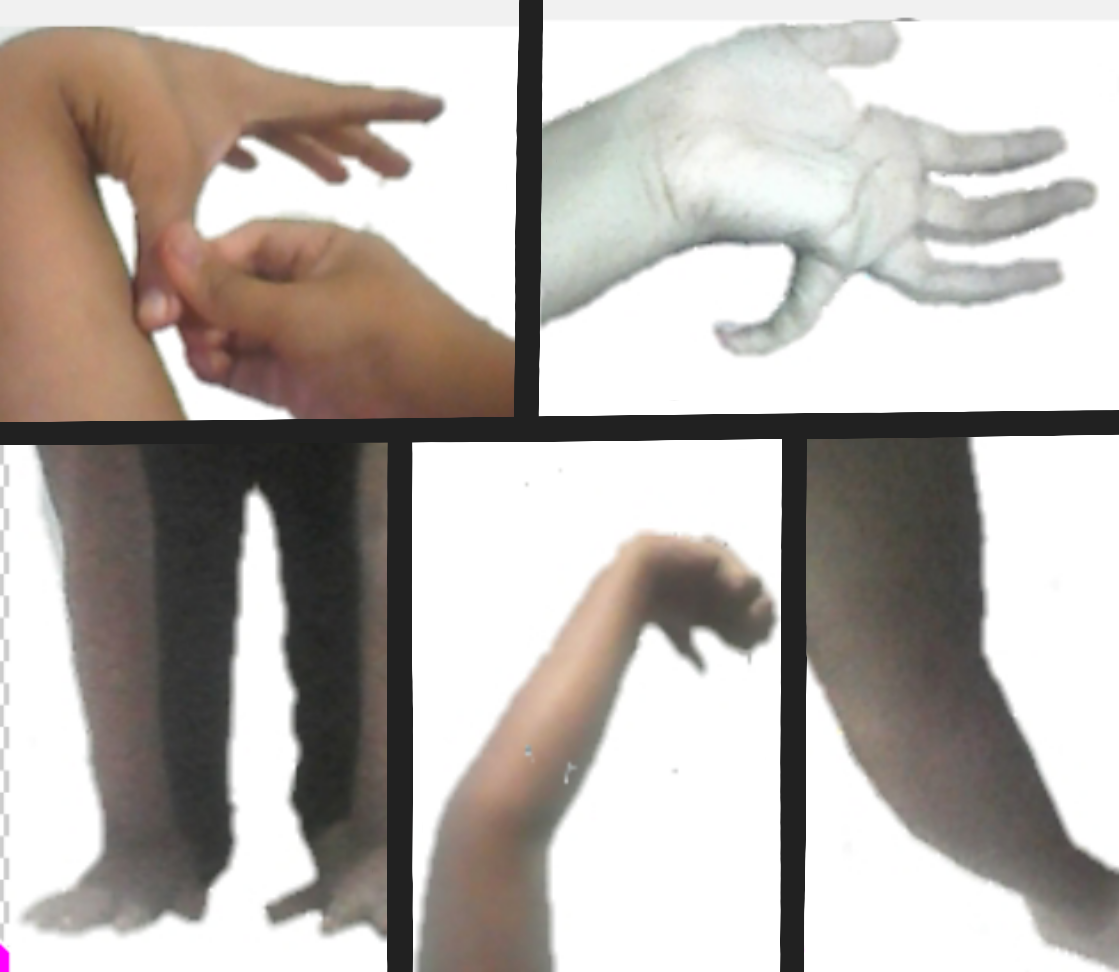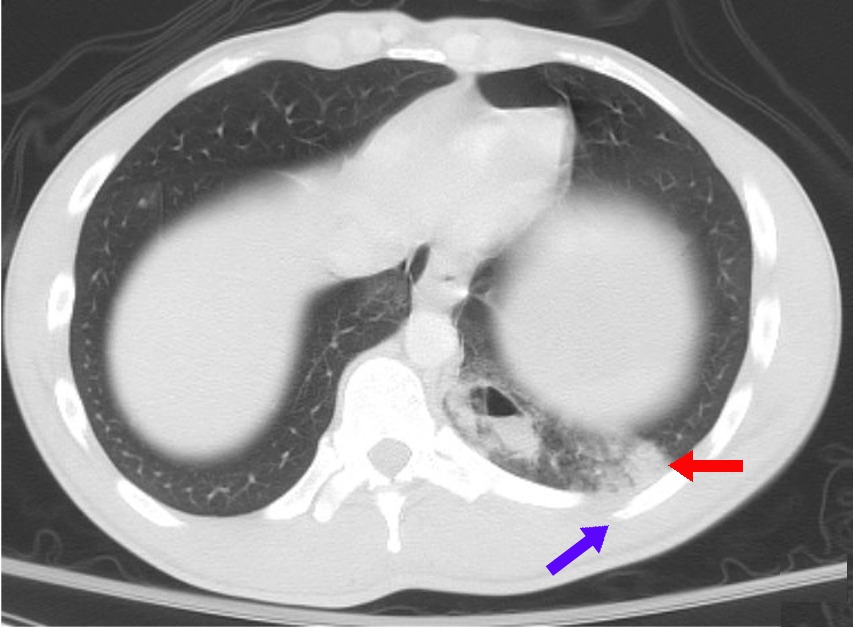|
Hitchhiker's Thumb
Hitchhiker's thumb, also known as ''distal hyperextensibility of the thumb'' is the condition of having a thumb that has a distal phalange that bends backwards in an angle of 90°, it is thought to be inherited in an autosomal recessive manner, however, it presents on genetic disorders that are inherited in an autosomal dominant manner. This condition is benign (when isolated) and does not cause pain or affect the thumb with the trait negatively. If a person has the genes for this condition, it might present bilaterally, unilaterally, or on none of the thumbs. Signs and symptoms Symptoms vary among people with hitchhiker's thumbs, those who have it as an isolated trait aren't affected by any symptoms, however, this trait is sometimes a symptom of other conditions, such as a hypermobility spectrum disorder. The signs of this trait are having a thumb with a distal phalange that is able to bend backwards beyond the normal range of motion. Some people with hitchhiker's thumb als ... [...More Info...] [...Related Items...] OR: [Wikipedia] [Google] [Baidu] |
Hypermobility (joints)
Hypermobility, also known as double-jointedness, describes joints that stretch farther than normal. For example, some hypermobile people can bend their thumbs backwards to their wrists, bend their knee joints backwards, put their leg behind the head or perform other contortionist "tricks". It can affect one or more joints throughout the body. Hypermobile joints are common and occur in about 10 to 25% of the population, but in a minority of people, pain and other symptoms are present. This may be a sign of what is known as joint hypermobility syndrome (JMS) or, more recently, hypermobility spectrum disorder (HSD). Hypermobile joints are a feature of genetic connective tissue disorders such as hypermobility spectrum disorder (HSD) or Ehlers–Danlos syndromes (EDS). Until new diagnostic criteria were introduced, hypermobility syndrome was sometimes considered identical to hypermobile Ehlers–Danlos syndrome (hEDS), formerly called EDS Type 3. As no genetic test can distinguish the ... [...More Info...] [...Related Items...] OR: [Wikipedia] [Google] [Baidu] |
Autosomal Recessive
In genetics, dominance is the phenomenon of one variant (allele) of a gene on a chromosome masking or overriding the effect of a different variant of the same gene on the other copy of the chromosome. The first variant is termed dominant and the second recessive. This state of having two different variants of the same gene on each chromosome is originally caused by a mutation in one of the genes, either new (''de novo'') or inherited. The terms autosomal dominant or autosomal recessive are used to describe gene variants on non-sex chromosomes ( autosomes) and their associated traits, while those on sex chromosomes (allosomes) are termed X-linked dominant, X-linked recessive or Y-linked; these have an inheritance and presentation pattern that depends on the sex of both the parent and the child (see Sex linkage). Since there is only one copy of the Y chromosome, Y-linked traits cannot be dominant or recessive. Additionally, there are other forms of dominance such as incomplete d ... [...More Info...] [...Related Items...] OR: [Wikipedia] [Google] [Baidu] |
Hypermobility Spectrum Disorder
Hypermobility spectrum disorder (HSD), related to earlier diagnoses such as hypermobility syndrome (HMS), and joint hypermobility syndrome (JHS) is a heritable connective tissue disorder that affects joints and ligaments. Different forms and sub-types have been distinguished, but it does not include asymptomatic joint hypermobility, sometimes known as double-jointedness. Symptoms can include the inability to walk properly or for long distances, and pain in affected areas. Some people with HSD have hypersensitive nerves and a weaker immune system. It can also cause severe fatigue and some cases cause depressive episodes. It is somewhat similar to other genetic connective tissue disorders such as Ehlers–Danlos syndromes. There is a strong association between HSD and neurodevelopmental disorders such as ADHD (Attention deficit hyperactivity disorder) and ASD (autism spectrum disorder). Classification Hypermobility spectrum disorders are diagnosed when individuals have sym ... [...More Info...] [...Related Items...] OR: [Wikipedia] [Google] [Baidu] |
Medical Genetics
Medical genetics is the branch tics in that human genetics is a field of scientific research that may or may not apply to medicine, while medical genetics refers to the application of genetics to medical care. For example, research on the causes and inheritance of genetic disorders would be considered within both human genetics and medical genetics, while the diagnosis, management, and counselling people with genetic disorders would be considered part of medical genetics. In contrast, the study of typically non-medical phenotypes such as the genetics of eye color would be considered part of human genetics, but not necessarily relevant to medical genetics (except in situations such as albinism). ''Genetic medicine'' is a newer term for medical genetics and incorporates areas such as gene therapy, personalized medicine, and the rapidly emerging new medical specialty, predictive medicine. Scope Medical genetics encompasses many different areas, including clinical practice of ... [...More Info...] [...Related Items...] OR: [Wikipedia] [Google] [Baidu] |
Asymptomatic
In medicine, any disease is classified asymptomatic if a patient tests as carrier for a disease or infection but experiences no symptoms. Whenever a medical condition fails to show noticeable symptoms after a diagnosis it might be considered asymptomatic. Infections of this kind are usually called subclinical infections. Diseases such as mental illnesses or psychosomatic conditions are considered subclinical if they present some individual symptoms but not all those normally required for a clinical diagnosis. The term clinically silent is also found. Producing only a few, mild symptoms, disease is paucisymptomatic. Symptoms appearing later, after an asymptomatic incubation period, mean a pre-symptomatic period has existed. Importance Knowing that a condition is asymptomatic is important because: * It may develop symptoms later and only then require treatment. * It may resolve itself or become benign. * It may be contagious, and the contribution of asymptomatic and pre-symptomat ... [...More Info...] [...Related Items...] OR: [Wikipedia] [Google] [Baidu] |
Asymptomatic
In medicine, any disease is classified asymptomatic if a patient tests as carrier for a disease or infection but experiences no symptoms. Whenever a medical condition fails to show noticeable symptoms after a diagnosis it might be considered asymptomatic. Infections of this kind are usually called subclinical infections. Diseases such as mental illnesses or psychosomatic conditions are considered subclinical if they present some individual symptoms but not all those normally required for a clinical diagnosis. The term clinically silent is also found. Producing only a few, mild symptoms, disease is paucisymptomatic. Symptoms appearing later, after an asymptomatic incubation period, mean a pre-symptomatic period has existed. Importance Knowing that a condition is asymptomatic is important because: * It may develop symptoms later and only then require treatment. * It may resolve itself or become benign. * It may be contagious, and the contribution of asymptomatic and pre-symptomat ... [...More Info...] [...Related Items...] OR: [Wikipedia] [Google] [Baidu] |
Hypermobility Spectrum Disorder
Hypermobility spectrum disorder (HSD), related to earlier diagnoses such as hypermobility syndrome (HMS), and joint hypermobility syndrome (JHS) is a heritable connective tissue disorder that affects joints and ligaments. Different forms and sub-types have been distinguished, but it does not include asymptomatic joint hypermobility, sometimes known as double-jointedness. Symptoms can include the inability to walk properly or for long distances, and pain in affected areas. Some people with HSD have hypersensitive nerves and a weaker immune system. It can also cause severe fatigue and some cases cause depressive episodes. It is somewhat similar to other genetic connective tissue disorders such as Ehlers–Danlos syndromes. There is a strong association between HSD and neurodevelopmental disorders such as ADHD (Attention deficit hyperactivity disorder) and ASD (autism spectrum disorder). Classification Hypermobility spectrum disorders are diagnosed when individuals have sym ... [...More Info...] [...Related Items...] OR: [Wikipedia] [Google] [Baidu] |
Family History
Genealogy () is the study of families, family history, and the tracing of their Lineage (anthropology), lineages. Genealogists use oral interviews, historical records, genetic analysis, and other records to obtain information about a family and to demonstrate kinship and Pedigree chart, pedigrees of its members. The results are often displayed in charts or written as narratives. The field of family history is broader than genealogy, and covers not just lineage but also family and community history and biography. The record of genealogical work may be presented as a "genealogy", a "family history", or a "family tree". In the narrow sense, a "genealogy" or a "family tree" traces the descendants of one person, whereas a "family history" traces the ancestors of one person, but the terms are often used interchangeably. A family history may include additional biographical information, family traditions, and the like. The pursuit of family history and origins tends to be shaped by s ... [...More Info...] [...Related Items...] OR: [Wikipedia] [Google] [Baidu] |
Diastrophic Dysplasia
Diastrophic dysplasia is an autosomal recessive dysplasia which affects cartilage and bone development. ("Diastrophism" is a general word referring to a twisting.) Diastrophic dysplasia is due to mutations in the ''SLC26A2'' gene. Affected individuals have short stature with very short arms and legs and joint problems that restrict mobility. Signs and symptoms This condition is also characterized by an unusual clubfoot with twisting of the metatarsals, inward- and upward-turning foot, tarsus varus and inversion adducted appearances. Furthermore, they classically present with scoliosis (progressive curvature of the spine) and unusually positioned thumbs (hitchhiker's thumbs). About half of infants with diastrophic dysplasia are born with an opening in the roof of the mouth called a cleft palate. Swelling of the external ears is also common in newborns and can lead to thickened, deformed ears. The signs and symptoms of diastrophic dysplasia are similar to those of another skeletal ... [...More Info...] [...Related Items...] OR: [Wikipedia] [Google] [Baidu] |
Rheumatoid Arthritis
Rheumatoid arthritis (RA) is a long-term autoimmune disorder that primarily affects joints. It typically results in warm, swollen, and painful joints. Pain and stiffness often worsen following rest. Most commonly, the wrist and hands are involved, with the same joints typically involved on both sides of the body. The disease may also affect other parts of the body, including skin, eyes, lungs, heart, nerves and blood. This may result in a low red blood cell count, inflammation around the lungs, and inflammation around the heart. Fever and low energy may also be present. Often, symptoms come on gradually over weeks to months. While the cause of rheumatoid arthritis is not clear, it is believed to involve a combination of genetic and environmental factors. The underlying mechanism involves the body's immune system attacking the joints. This results in inflammation and thickening of the joint capsule. It also affects the underlying bone and cartilage. The diagnosis is made mos ... [...More Info...] [...Related Items...] OR: [Wikipedia] [Google] [Baidu] |
Ligamentous Laxity
Ligamentous laxity, or ligament laxity, is a cause of chronic body pain characterized by loose ligaments. When this condition affects joints in the entire body, it is called ''generalized joint hypermobility'', which occurs in about ten percent of the population, and may be genetic. Loose ligaments can appear in a variety of ways and levels of severity. It also does not always affect the entire body. One could have loose ligaments of the feet, but not of the arms. Someone with ligamentous laxity, by definition, has loose ligaments. Unlike other, more pervasive diseases, the diagnosis does not require the presence of loose tendons, muscles or blood vessels, hyperlax skin or other connective tissue problems. In heritable connective tissue disorders associated with joint hypermobility (such as Marfan syndrome and Ehlers–Danlos syndrome types I–III, VII, and XI), the joint laxity usually is apparent before adulthood. However, age of onset and extent of joint laxity are variable ... [...More Info...] [...Related Items...] OR: [Wikipedia] [Google] [Baidu] |






